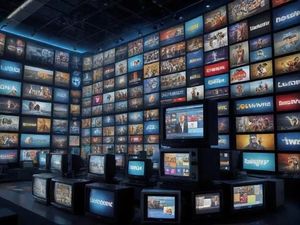It's been one year since the infamous Montgomery Riverboat Brawl made waves – quite literally – at Montgomery's riverfront. Social media, rather predictably, is buzzing with reflections and reactions as people commemorate the August 5, 2023 incident, where tensions flared and racial dynamics were laid bare for all to see. This clash didn't just change the course of one sunny afternoon; it lit up the internet and sparked conversations about race and justice.
So, what happened, exactly? To set the scene, picture this: co-captain Dameion Pickett was attempting to dock the Harriott II riverboat. The boat had been idling mid-river for what felt like ages—around 45 minutes—waiting for some pontoon boats to clear the way. The boater's resistance to the situation escalated quickly, leading Pickett to confront the owners of the offending boats.
Things turned ugly almost instantly. After trying to reason with the group, who were sheltered from responsibility, Pickett found himself shoved back when he was trying to communicate the issue. Instinct kicked in, and before long, chaos erupted. With fists flying, the brawl unfolded as numerous bystanders, particularly some lively bystanders, jumped to Pickett's defense.
And then, enter the infamous folding chair - the ultimate symbol of this unexpected showdown. One defender, Reggie Ray, didn't think twice before wielding it against the aggressors, solidifying the chair's legendary status on social media. Though the incident was riddled with conflict, many viewed the moment as one of solidarity among the Black community, reflecting unity amid turmoil.
Fast forward to August 5, 2024, and today's social media feeds are peppered with tributes and memes celebrating what is being affectionately dubbed the "Montgomery Boat Brawl Day." "Happy Montgomery Boat Brawl Day to all those who observe!" one individual posted, reminding everyone how turning their backs on injustice can lead to unexpected empowerment. Reactions vary from humorous retellings to serious reflections on the meaning of the brawl.
While it's easy to get lost in the humor of meme culture, this incident has sparked serious discussions about race relations, privilege, and community responses to situations of injustice. Many argue it served as a cultural flashpoint, reminding viewers about instances of racial aggression and the necessity of collective action.
But the stories emerging from the brawl don’t end with laughter and viral videos. The incident led to arrests and court cases, highlighting stark divisions around the brawl's narrative. Richard Roberts, one of the men seen on camera throwing punches, was sentenced to serve 32 days of community confinement. Mary Todd, who was part of the group confronting Pickett, pled guilty to harassment and attended anger management classes as part of her sentence.
These developments prompted the community of Montgomery to engage and reflect. Candyce Anderson, passionate about healing through action, organized commemorative events to encourage unity among residents. “It’s not just about remembering the past, but about moving forward with positivity,” she stated, advocating for vibrant community engagement instead of division.
Meanwhile, responses from authorities such as the FBI have indicated no federal hate crimes were established from the incident, reiteratively raising questions about the legal ramifications and community perspectives on actions taken during the day on the dock.
We live in times where shared experiences and memories can quickly morph with the aid of social media. A year later, we see how the folding chair's viral fame illustrates something beyond mere physical confrontations – it reveals the communities attempting to redefine their narratives and assert their power from the remnants of historical oppression.
The impact of the Montgomery Riverboat Brawl, both locally and nationally, is hard to ignore. It serves as both entertainment and as a reminder of the struggles still facing communities today. Through memes, humor, and art rooted in shared heritage, people are reclaiming their stories, turning past grievances from trauma to triumph - and, if nothing else, succeeding at making history fun.
Indeed, one day the story may evolve beyond mere humor and trauma as it's embedded within the larger conversations surrounding race relations and their historical context.
Fast-forward to today and the brawl remains part of contemporary cultural discourse, presenting both comedy and complexity. Social media users, like average spectators turned participants, continue to share and reshape the narrative as it persists through various digital lenses. All these threads are woven together to create what could potentially be seen as new myths surrounding race, resilience, and humor. What’s next for this bubbling narrative?
Montgomery may have differences on the surface, but beneath it, the memories of the riverfront brawl serve to remind everyone of the strength and unity attainable when communities rally together. The memories of the brawl may have washed ashore like driftwood, but the embers are still burning bright, showing how one unexpected moment can become a beacon of collective identity and empowerment.



